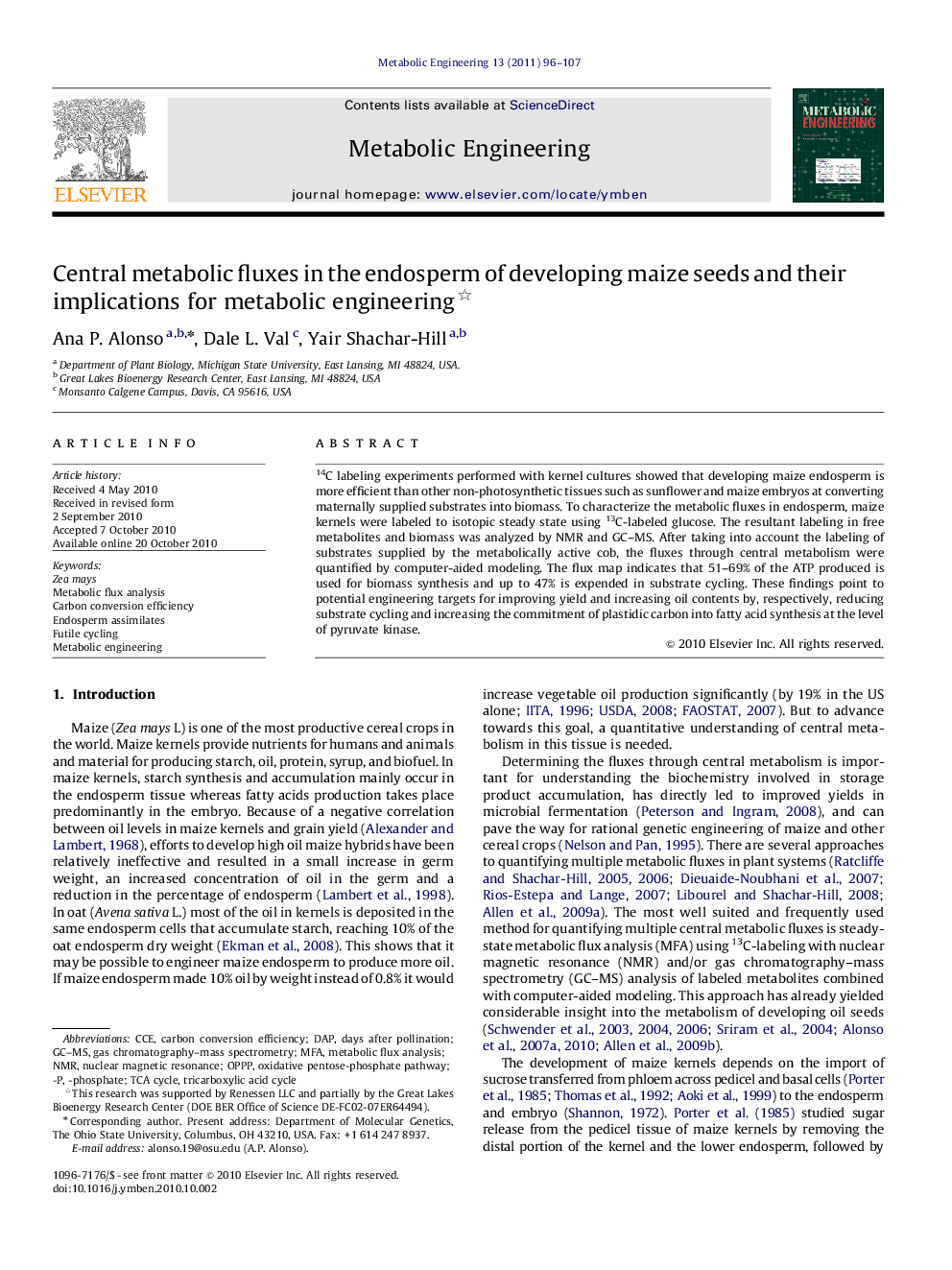| Article ID | Journal | Published Year | Pages | File Type |
|---|---|---|---|---|
| 31839 | Metabolic Engineering | 2011 | 12 Pages |
14C labeling experiments performed with kernel cultures showed that developing maize endosperm is more efficient than other non-photosynthetic tissues such as sunflower and maize embryos at converting maternally supplied substrates into biomass. To characterize the metabolic fluxes in endosperm, maize kernels were labeled to isotopic steady state using 13C-labeled glucose. The resultant labeling in free metabolites and biomass was analyzed by NMR and GC–MS. After taking into account the labeling of substrates supplied by the metabolically active cob, the fluxes through central metabolism were quantified by computer-aided modeling. The flux map indicates that 51–69% of the ATP produced is used for biomass synthesis and up to 47% is expended in substrate cycling. These findings point to potential engineering targets for improving yield and increasing oil contents by, respectively, reducing substrate cycling and increasing the commitment of plastidic carbon into fatty acid synthesis at the level of pyruvate kinase.
